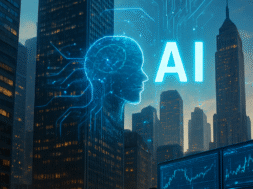
AI and Suicide Prevention: Harnessing Technology to Save Lives
Suicide prevention is a major challenge for society and mental health practitioners and a global public health issue. With improvements in machine learning and artificial intelligence (AI), there is renewed optimism for using technology to spot suicidal behavior early on and take preventive action. Utilizing AI to prevent suicide can revolutionize mental health services and save countless lives.
- The Burden of Suicide:
Suicide is a painful and complicated phenomenon that has an impact on people and communities all around the world. The World Health Organisation estimates that 800,000 people worldwide commit suicide yearly, making it the world’s biggest cause of death. Early detection of suicidal inclinations is essential for prompt intervention and giving struggling individuals the help they need.
- The Potential of AI in Suicide Prevention:
The capacity of AI to examine enormous volumes of data and spot patterns that perhaps aren’t obvious to human observers offers a special possibility in suicide prevention. Artificial intelligence (AI) systems can spot possible warning indicators and red flags connected to suicidal thoughts and behavior by observing different internet platforms and communication channels. You can learn more about AI Pros and Cons here.
- Analyzing Social Media and Communication Patterns:
Individuals now rely heavily on social media sites and online forums to share their ideas and feelings. AI may examine language patterns, mood, and context in postings and conversations to spot indications of misery, hopelessness, or suicidal thinking. This study enables mental health practitioners to take action and assist people who require it.
- Natural Language Processing for Suicide Risk Assessment:
Suicide risk assessment is aided by AI-powered natural language processing (NLP) systems that analyze and comprehend spoken or written language. Virtual assistants and chatbots may converse with users and pose particular questions to determine their mental health condition and the risk of suicide. These tools can notify first responders or link consumers to support services for emergencies or helplines.
- Identifying High-Risk Populations:
AI algorithms may analyze demographic and behavioral information to pinpoint high-risk areas and people. Utilizing this data will enable optimal resource allocation for mental health, program customization for prevention, and targeted outreach to at-risk areas.
- Predictive Modeling for Early Intervention:
Using historical data and various risk variables, AI can identify those more likely to commit suicide. Early detection enables mental health practitioners to connect with individuals and provide timely care, perhaps averting crises and self-harm.
- Integrating AI into Crisis Hotlines:
Chatbots powered by artificial intelligence (AI) can supplement the current suicide prevention hotlines, offering crisis callers quick assistance and resources. These chatbots can give users nonjudgmental, private help and point them toward the best mental health resources.
- Ethical Considerations in AI Suicide Prevention:
AI has great promise for reducing suicide rates, but ethical concerns must come first. It is essential to safeguard data privacy and confidentiality, decrease algorithmic bias, and get users’ informed consent before implementing AI in sensitive mental health circumstances.
- Collaboration and Knowledge Sharing:
Developing effective AI-driven suicide prevention strategies depends on collaboration between artificial intelligence researchers, mental health professionals, and legislators. An open exchange of information, concepts, and best practices can promote cooperation in the battle against suicide.
- Monitoring and Evaluation:
The effectiveness of AI suicide prevention systems must be regularly assessed to refine algorithms. With the help of user and professional feedback on mental health, the technology’s accuracy and reactivity are continually enhanced.
AI has a bright future in suicide prevention, and its integration into mental health care can advance present practices and result in life-saving outcomes. By utilizing technology to monitor online communication, identify warning signs, and provide immediate assistance, artificial intelligence (AI) has the potential to contribute to reducing suicide rates and improving mental health significantly. However, AI suicide prevention must be addressed responsibly, emphasizing data security, transparency, and prudent deployment. To fully utilize AI to solve this urgent global issue, a collaboration between AI scientists, mental health practitioners, and society at large will be essential as technology develops.













